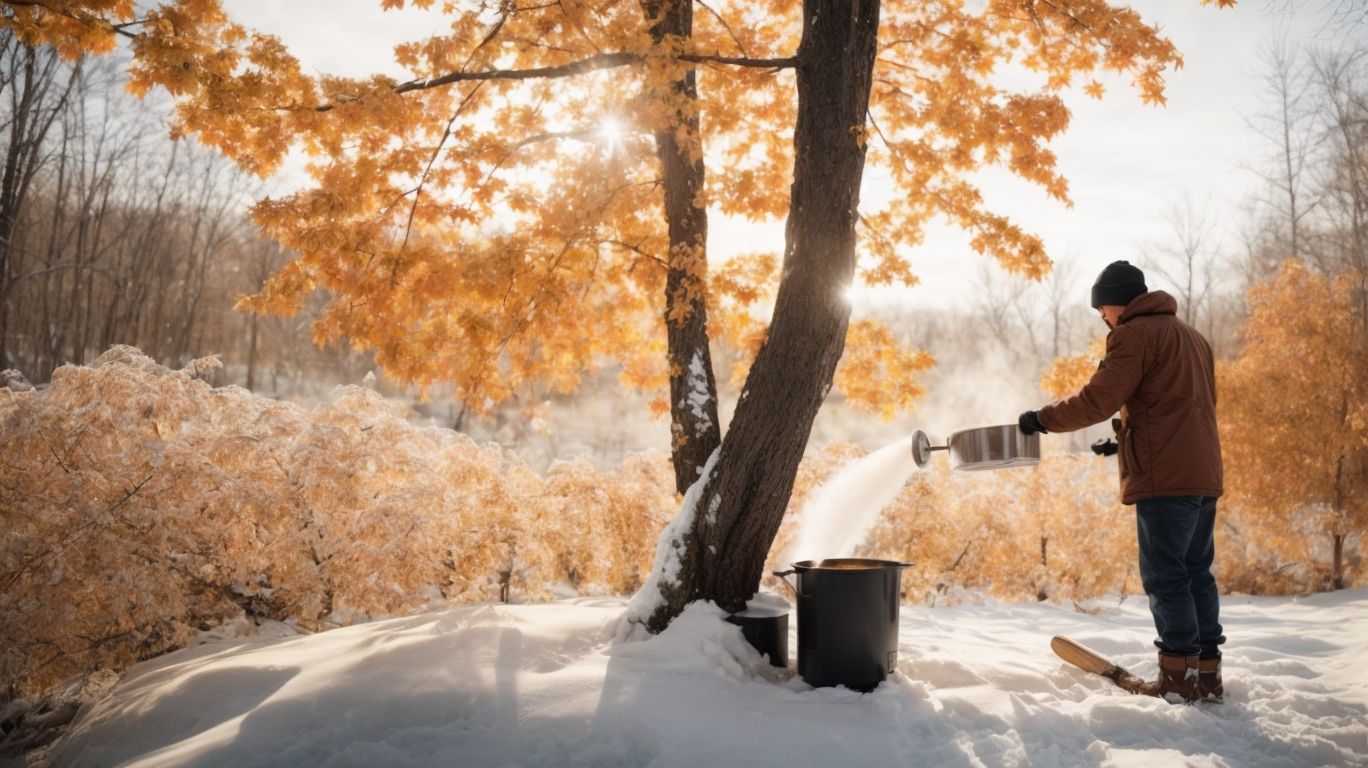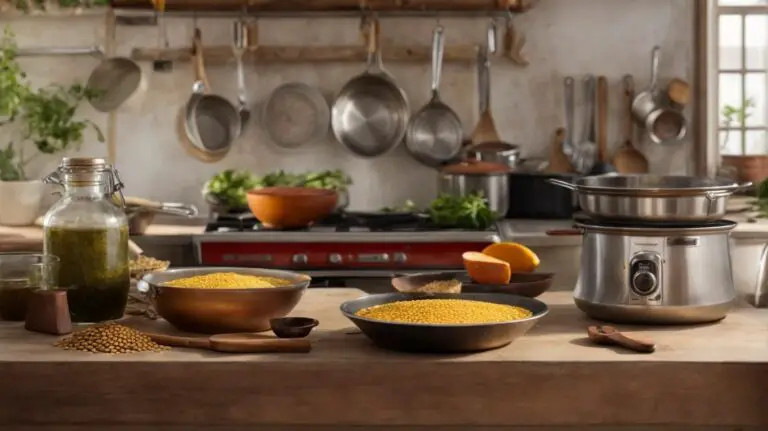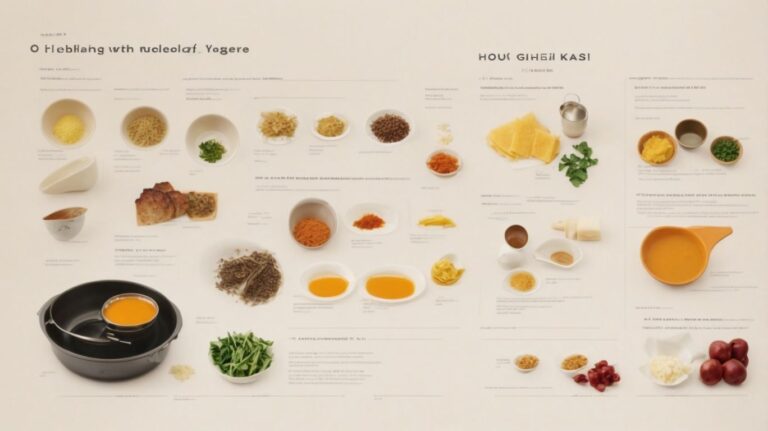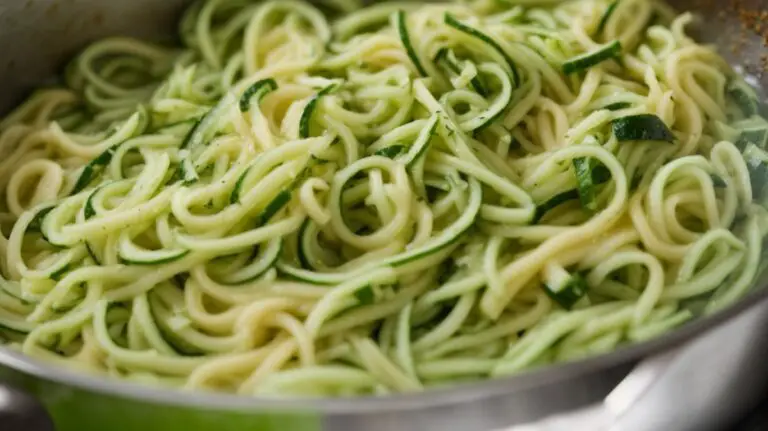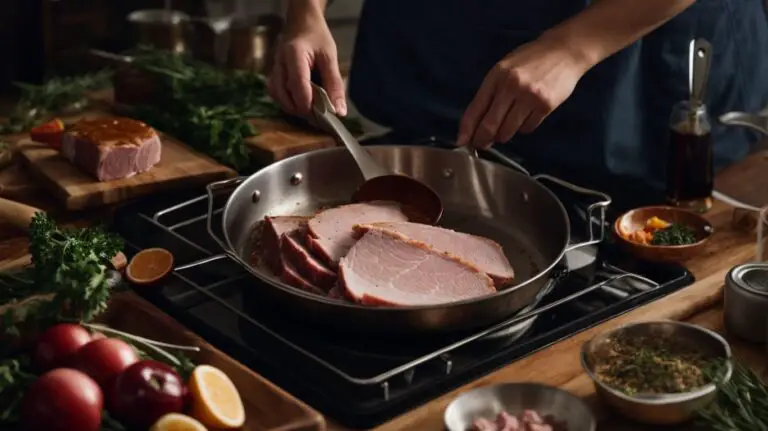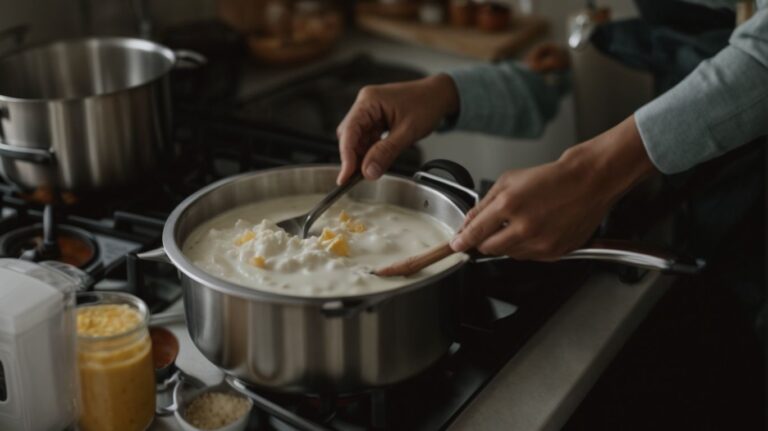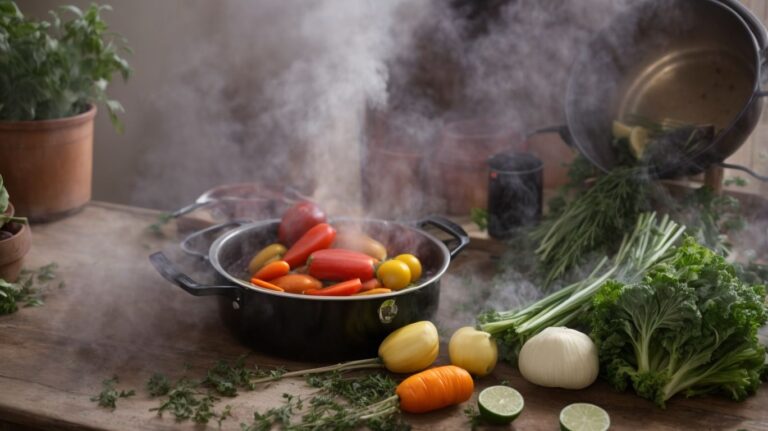How to Cook Maple Sap Into Syrup?
Curious about the process of turning maple sap into delicious maple syrup?
In this article, we will explore everything you need to know about tapping maple trees, collecting sap, and cooking it into syrup.
From the tools you need to the best time to tap trees, we will cover all the essential steps.
Discover how to properly store and use maple syrup, along with some tips and tricks for making the perfect batch.
Stay tuned to become a maple syrup-making expert!
Key Takeaways:
What is Maple Syrup?
Maple syrup is a natural sweetener made from the sap of maple trees, primarily in North America, with regions like Nova Scotia known for its production.
The process of making maple syrup involves tapping the maple trees in late winter or early spring when the sap starts to flow due to temperature changes. This sap is collected through a network of tubes or buckets and then boiled down in a sugarhouse or evaporator. During the boiling process, water evaporates, leaving behind the concentrated sap that eventually becomes maple syrup. The sugar content of the sap, measured in Brix, determines its grade as Grade A or Grade B, with Grade A being lighter in color and milder in flavor than Grade B.
Maple syrup can be used in various culinary applications, such as drizzling over pancakes, waffles, oatmeal, or even used in marinades and glazes for meats and vegetables.
What is Maple Sap?
Maple sap is the watery fluid extracted from maple trees, containing sugar content that is crucial for the maple syrup production process.
Maple sap typically contains around 2% to 3% sugar content, which is considerably lower than the concentrated sweetness of maple syrup. This natural sap is collected by tapping into the trees during the late winter or early spring when the sap flow is at its peak. The collection process involves hanging collection buckets on the trees to catch the dripping sap, which is then carefully transferred into large containers for transportation. Once collected, the sap is taken to processing facilities where it undergoes a series of boiling and filtering stages to concentrate the sugars and develop the characteristic maple flavor. After the syrup reaches the desired thickness and flavor, it is carefully bottled in mason jars for distribution and consumption.
How to Tap Maple Trees for Sap?
To tap maple trees for sap, you need to identify suitable trees, drill holes to extract the sap, and install spiles to facilitate the collection process.
What Trees Can Be Tapped for Sap?
Maple trees such as sugar maple, red maple, and black maple are commonly tapped for sap extraction due to their high sugar content ideal for maple syrup production.
Each type of maple tree has its own unique characteristics that make it suitable for sap tapping.
- Sugar Maple: Known for its high sugar content, sugar maple trees produce sap with a sugar concentration of around 2% which is ideal for maple syrup production.
- Red Maple: While red maple trees have a lower sugar content compared to sugar maples, they are still tapped for their sap which can be used to make maple products.
- Black Maple: Black maple trees fall between sugar maple and red maple in terms of sugar content but are valued for their distinct flavor profile.
When is the Best Time to Tap Maple Trees?
The best time to tap maple trees for sap extraction is during late winter or early spring when the temperature fluctuations stimulate sap flow.
During this period, typically between February and March in many regions, the environmental conditions play a crucial role in the successful collection of sap. Ideally, nights should drop below freezing with daytime temperatures rising above freezing to create the necessary pressure changes within the tree. This fluctuation causes the sap to move up and down the tree, making it easier to extract.
- Moisture levels in the soil also affect sap flow, with moist soils leading to better sap production.
- It’s essential to monitor the Brix levels in the sap to determine when it’s ideal for collection, usually around 2% sugar content.
- To ensure efficiency, invest in a reliable hydrometer to accurately measure the sugar concentration before bottling the sap.
How to Collect Maple Sap?

Credits: Poormet.Com – Michael Young
Collecting maple sap involves using collection buckets, tubing systems, or vacuum pumps to gather the sap efficiently from tapped trees.
What Tools Do You Need for Collecting Maple Sap?
Tools required for collecting maple sap include collection buckets, tapping spiles, tubing systems, thermometers, and hydrometers to monitor sap flow and quality.
Another essential tool for efficient sap collection is a drill or tapping hammer to create the necessary holes in the maple tree for inserting the spiles. These tools come in various sizes to accommodate different types of trees and ensure proper tapping. Maintaining cleanliness is crucial, so having sanitizing wipes or solutions to clean equipment between uses helps prevent contamination. A filtering system, such as a mesh filter or cotton cloth, is necessary to remove impurities and debris from the collected sap before processing.
How Much Sap Do You Need to Make Maple Syrup?
On average, it takes approximately 40 gallons of maple sap to produce one gallon of maple syrup, with variations depending on the sugar content and desired syrup thickness.
The boiling process is crucial in maple syrup production as it concentrates the sap by evaporating water, ultimately leading to the desired sweetness and thickness of the syrup. This process typically involves using a stove or specialized evaporator equipment to carefully control the temperature and consistency of the syrup. Factors such as weather conditions, tree health, and tapping techniques also play a significant role in determining the yield and quality of the final product. To ensure purity and clarity, the syrup is often filtered before bottling to remove any impurities or sediment.
How to Cook Maple Sap into Syrup?
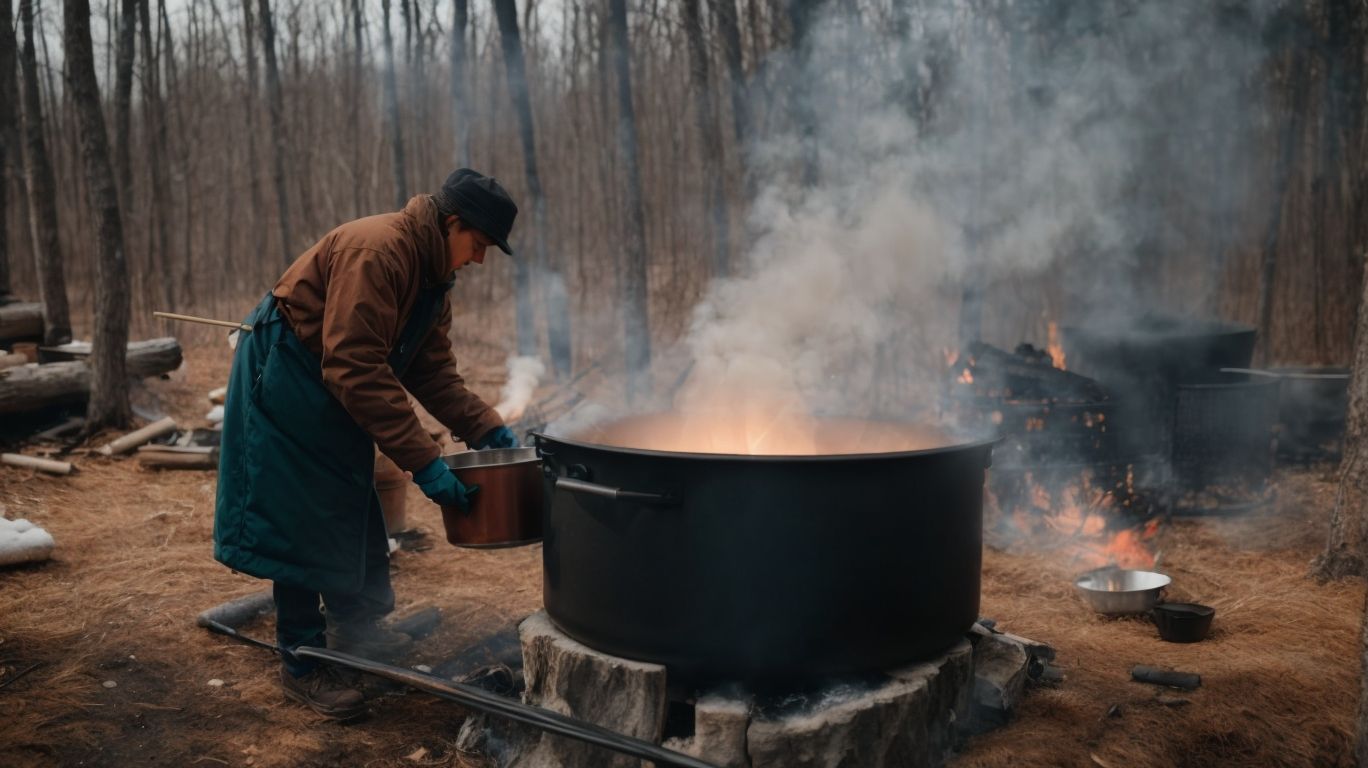
Credits: Poormet.Com – Jacob Wright
Cooking maple sap into syrup involves boiling the sap to a specific temperature, filtering out impurities, and monitoring the syrup’s consistency using a thermometer and a hydrometer.
What Equipment Do You Need for Cooking Maple Sap into Syrup?
Essential equipment for cooking maple sap into syrup includes a stove or evaporator, filtering equipment, a hydrometer for measuring sugar content, and a thermometer for temperature control.
Additional tools that are critical for collecting maple sap and ensuring high-quality syrup production are sap collection buckets or tubing, storage containers, a refractometer to measure Brix levels accurately, and sterilizing equipment for maintaining hygienic conditions.
Regular maintenance of the filtering equipment is crucial to prevent clogging and ensure proper filtration of impurities, while the hydrometer needs periodic calibration to provide precise sugar content readings. Likewise, the thermometer should be calibrated frequently to guarantee accurate temperature readings for different syrup-making stages.
What is the Process of Cooking Maple Sap into Syrup?
The process of cooking maple sap into syrup involves heating the sap to a specific temperature, skimming off impurities, and testing syrup thickness using a hydrometer and visual cues.
Once the sap is collected from the maple trees in early spring, it is boiled down to evaporate the water content and concentrate the sugary liquid. This boiling process is crucial as it transforms the watery sap into the thick, sweet syrup we all love. During the boiling stages, the temperature must be carefully monitored to reach the desired consistency. The use of a thermometer is essential to ensure the sap reaches the precise point for syrup formation.
How to Store and Use Maple Syrup?
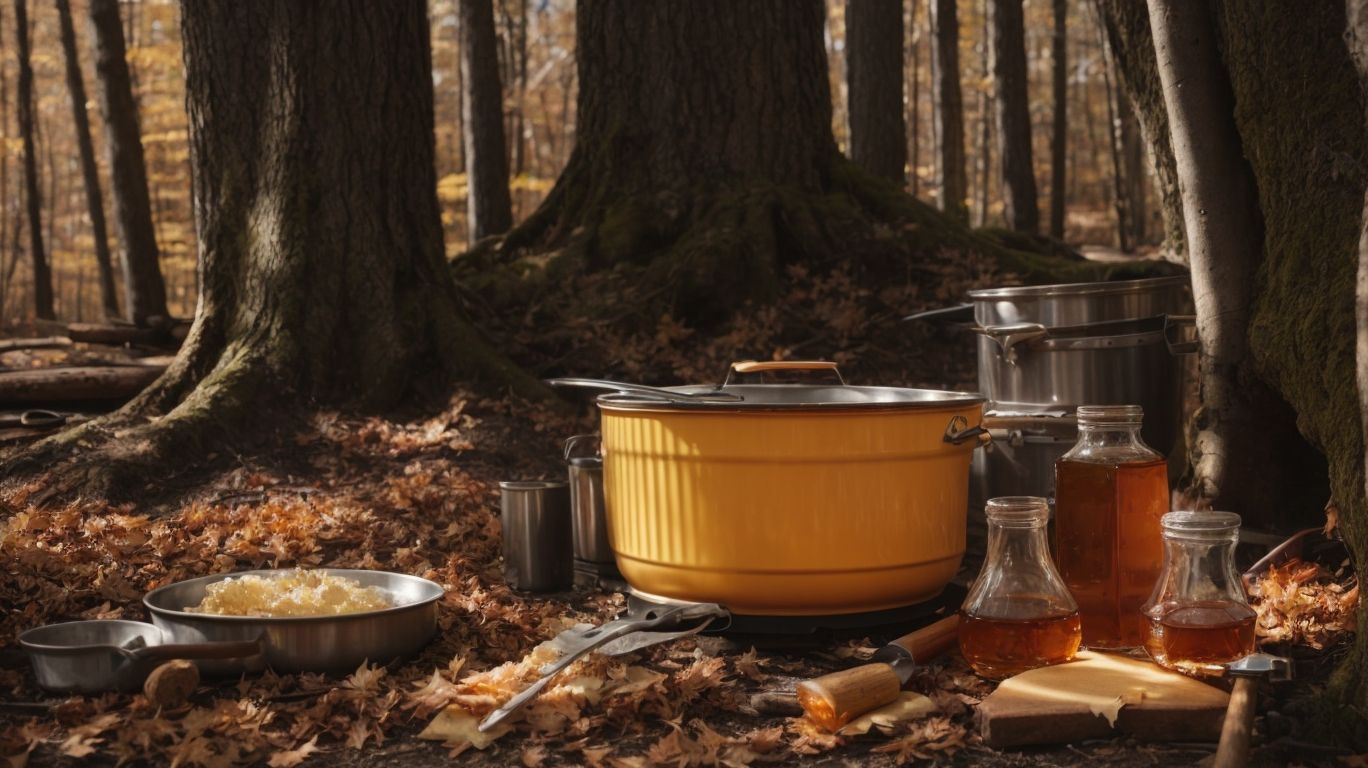
Credits: Poormet.Com – Larry Perez
To store maple syrup, ensure it is sealed in airtight containers like mason jars, stored in a cool, dark place, and used within a reasonable time to maintain quality.
How to Properly Store Maple Syrup?
Proper storage of maple syrup involves refrigeration or freezing for long-term preservation, or room temperature storage for shorter periods, ensuring the syrup remains fresh and flavorful.
When opting for refrigeration, it is important to select a glass or plastic container that is airtight to prevent any absorption of odors or flavors from the surroundings. Ensure that the syrup is stored away from strong-smelling foods to maintain its original taste. For freezing, make sure to leave some space in the container as syrup tends to expand when frozen. When handling Grade A maple syrup, which has a high Brix content, avoid exposing it to direct sunlight or high temperatures, and always use a clean spoon to prevent contamination.
What are Different Ways to Use Maple Syrup in Cooking?
Maple syrup can be used in various cooking applications, such as glazes, marinades, dressings, desserts, and even in beverages like cocktails and coffee.
One popular method for utilizing maple syrup in cooking is as a key ingredient in barbecue sauces for a sweet and savory flavor profile.
When used in baking, maple syrup adds a rich depth of sweetness, especially in treats like maple pecan pies or maple-infused cookies.
Another creative way to incorporate maple syrup is by making a maple vinaigrette for salads, combining the syrup with olive oil, balsamic vinegar, and Dijon mustard.
Tips and Tricks for Making Maple Syrup
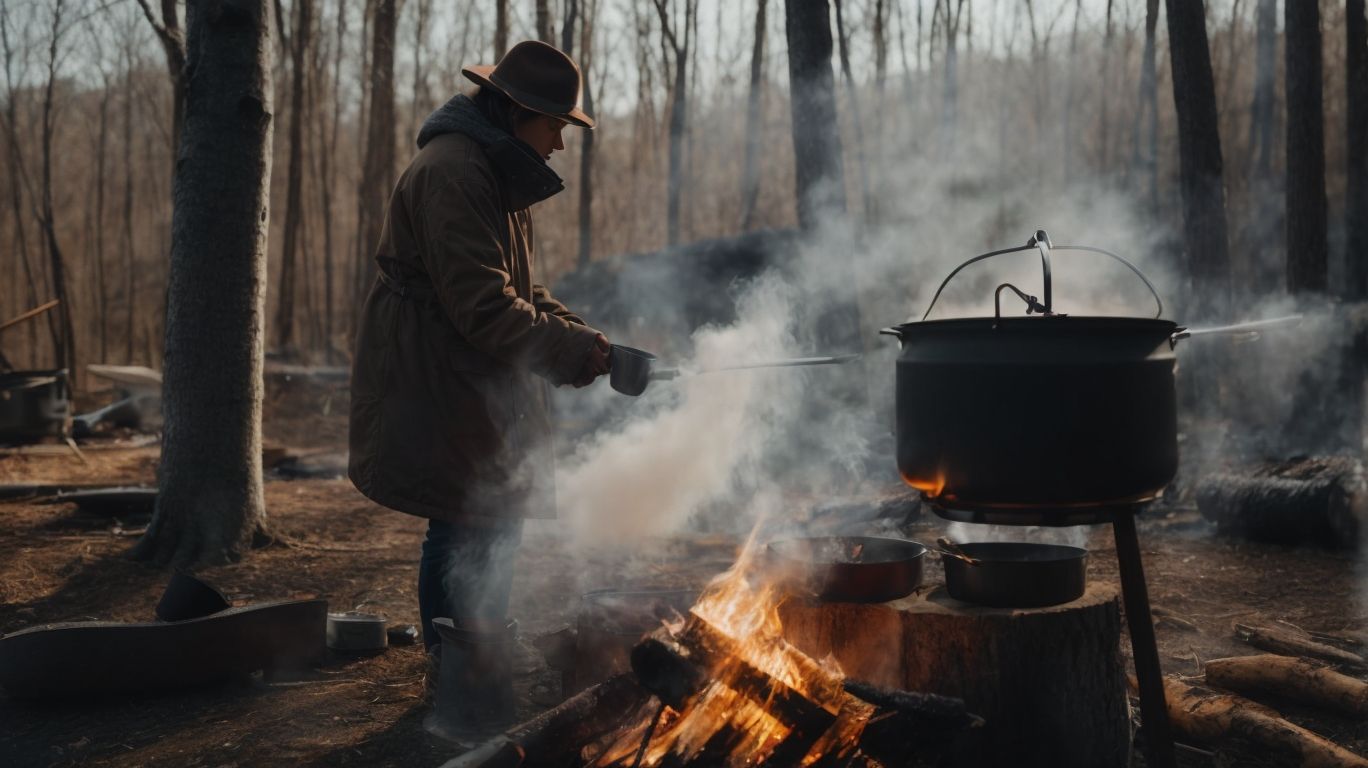
Credits: Poormet.Com – Benjamin Hall
Mastering the art of making maple syrup requires precision in temperature control, timely filtering of impurities, and understanding the nuances of syrup thickness for desired outcomes.
How to Avoid Scorching the Syrup?
To avoid scorching the syrup, maintain consistent heat levels, stir the sap frequently during boiling, and use quality filtration equipment to prevent burnt flavors.
Proper management of heat is essential to achieve the optimal consistency and taste of the maple syrup. Avoid sudden temperature spikes by adjusting the heat source gradually. A thermometer can be your best friend during this process, allowing you to monitor the temperature accurately.
When using collection buckets, ensure they are clean and free from debris that could affect the syrup quality. Regular stirring not only prevents scorching but also helps in the evaporation process, concentrating the sap into rich, flavorful syrup.
How to Get a Lighter or Darker Syrup?
Achieving a lighter or darker syrup hue involves monitoring boiling times, sugar content adjustments, and filtration techniques to control the syrup’s caramelization levels.
To determine the color of the final syrup product, the timing during the boiling process plays a crucial role. Longer boiling periods tend to deepen the syrup’s hue due to further caramelization of sugars.
- Fine-tuning the Brix level, which indicates the sugar concentration, also impacts the syrup’s color. Higher sugar content can lead to a darker hue, while dilution may result in a more translucent appearance.
The choice of filtration method can also affect the syrup’s color. Filtering out impurities and excess minerals through a fine mesh can result in a clearer, lighter syrup. On the other hand, minimal filtration may retain more natural elements, contributing to a richer, darker hue. The bottling process should be handled carefully to maintain the desired color consistency throughout storage and consumption.
How to Tell When the Syrup is Done?
Determining when maple syrup is done requires testing its consistency using a hydrometer or visual cues like the syrup’s flow patterns or the formation of bubbles during boiling.
Grade A maple syrup, typically the desired end product, should have a clear, amber color and a smooth, slightly thick texture. To check the texture, drip a small amount of syrup on a cold plate, and observe if it forms a sheet or thickens quickly. Flavor is crucial; the syrup should have a balanced sweetness with subtle undertones of caramel or vanilla. For temperature tests, utilize a thermometer to ensure the syrup reaches the correct boiling point on the stove top.
Frequently Asked Questions
What is maple sap and how is it turned into syrup?
Maple sap is the clear, slightly sweet liquid that is collected from maple trees. To turn it into syrup, it is boiled down until most of the water evaporates, leaving behind a sweet and sticky syrup.
How do I know when the maple sap has turned into syrup?
The easiest way to tell is by using a candy thermometer. When the syrup reaches a temperature of 219°F, it is ready to be removed from the heat and stored.
Can I use any type of maple tree sap to make syrup?
No, only certain types of maple trees produce sap that is suitable for making syrup. The most commonly used are sugar maples, red maples, and black maples.
What equipment do I need to cook maple sap into syrup?
You will need a large pot or pan for boiling the sap, a candy thermometer, a strainer, and some type of container for storing the syrup.
How long does it take to cook maple sap into syrup?
The time can vary depending on the amount of sap you have and the heat source you are using. On average, it takes about 40 liters of sap to make 1 liter of syrup and can take anywhere from 4-6 hours to cook.
Can I add any flavors to the syrup while cooking?
Absolutely! While traditional maple syrup is made solely from sap, you can add different flavorings such as vanilla, cinnamon, or even fruits like blueberries or strawberries to create unique and delicious syrups. Just be sure to add them towards the end of the cooking process.

